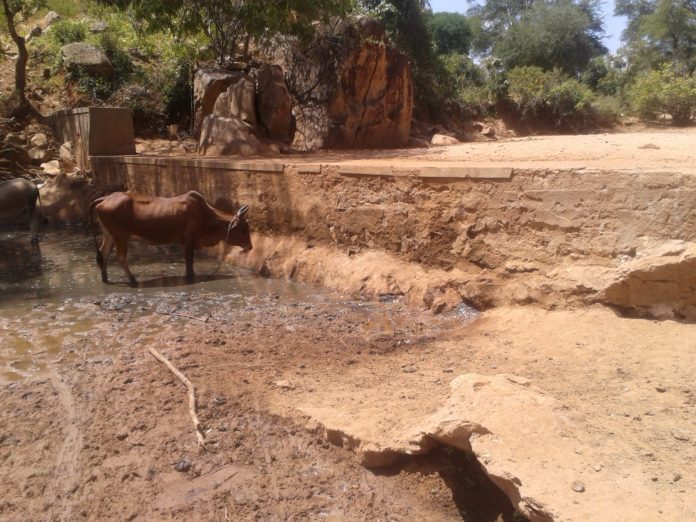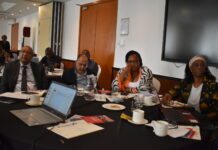By Mary Mwendwa
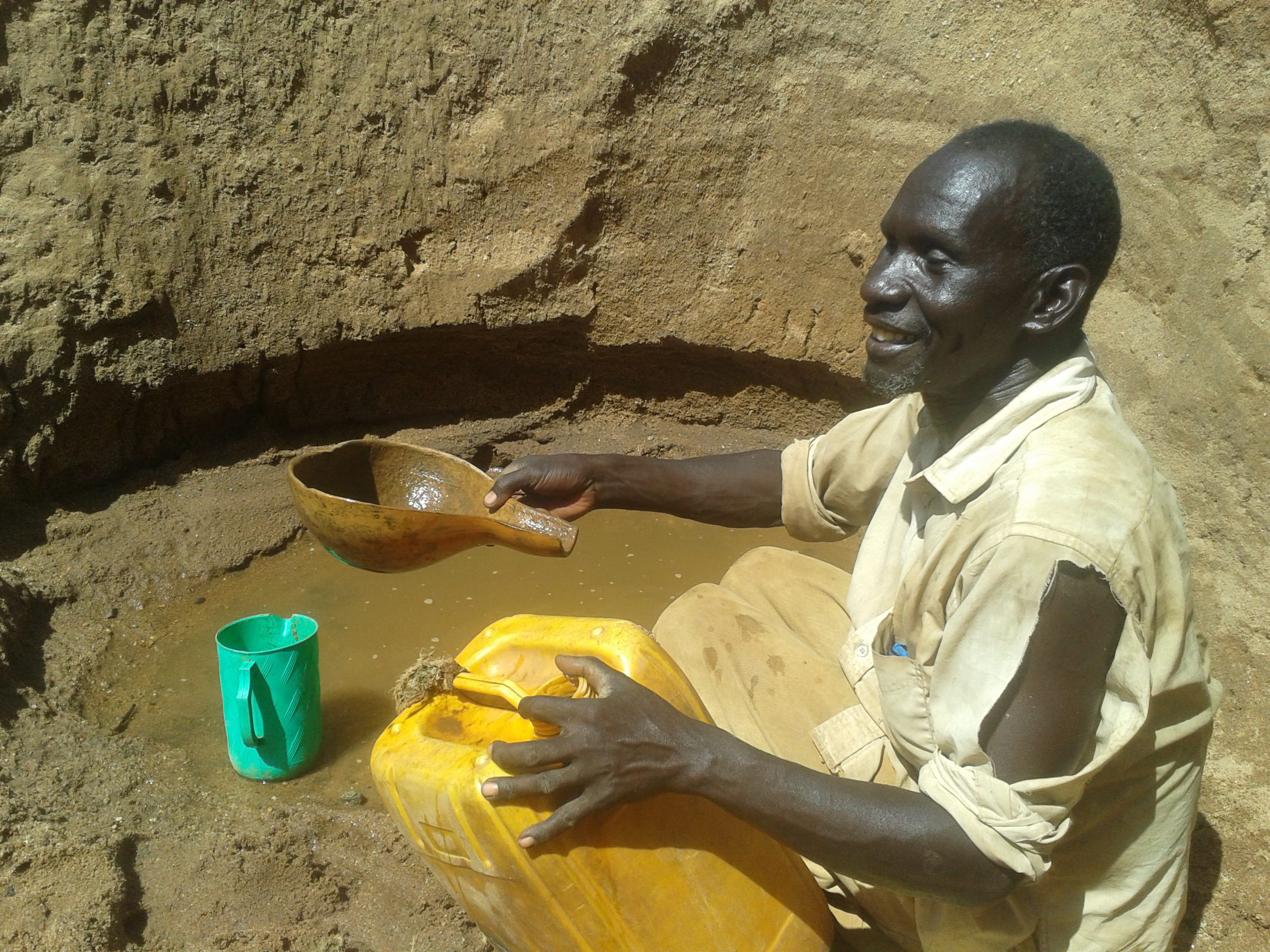
It is exactly 12 pm. At Mwinge river many people are gathered with gallons, donkeys, and handcarts ready to get the precious commodity, water.The The river is completely dry leaving behind carpets of sand and few rocks.
In groups of between five and seven, some people are digging the sand to get water while others are in already dug shallow wells scooping water with calabash carefully.
The water is not pure clean, it is somewhere between brown and crystal clear color.
Almost equal ratios of men and women are gathered here, many looking tired and whispering I their local Kamba dialect.
A young woman who looks tired and worn out is sited on a fallen tree trunk with another woman, not talking to each other.
Dressed in a white top, with a scarf wrapped around her tiny waist, Kimuli Mulei a slim dark young mother at 20 bears the pain of what it feels to spend a whole day at a water point leaving behind her breastfeeding the young baby.
She narrates how life has been very difficult without access to water at her humble village of Kimangau in Kitui East Sub –county, Kitui County.
Mwinge river has been their only source of water and now with the current drought, the river has since dried leaving behind heaps of sand.
“I came here at 8.00 o’clock in the morning with my six gallons, I have been queueing for many hours and hopes of getting even a drop of water are fading away. I have a baby who I left very really in the morning with the father if I don’t get water today I will not be able to wash her clothes or do any other chores in the house.” Kimuli narrates.
Kimuli continues to say how water shortage problems are not anything new to them. ”We have lived like this for long, it only gets worse like now when rains fail to come on time. River Mwinge is our only source of water and now is dry. We come here to dig down the sand to access water, at times we get other times we don’t.”
Cases similar to Kimuli are very common in Kitui County, however through innovation sand dam technology has come as a savior to some parts of this dry region.
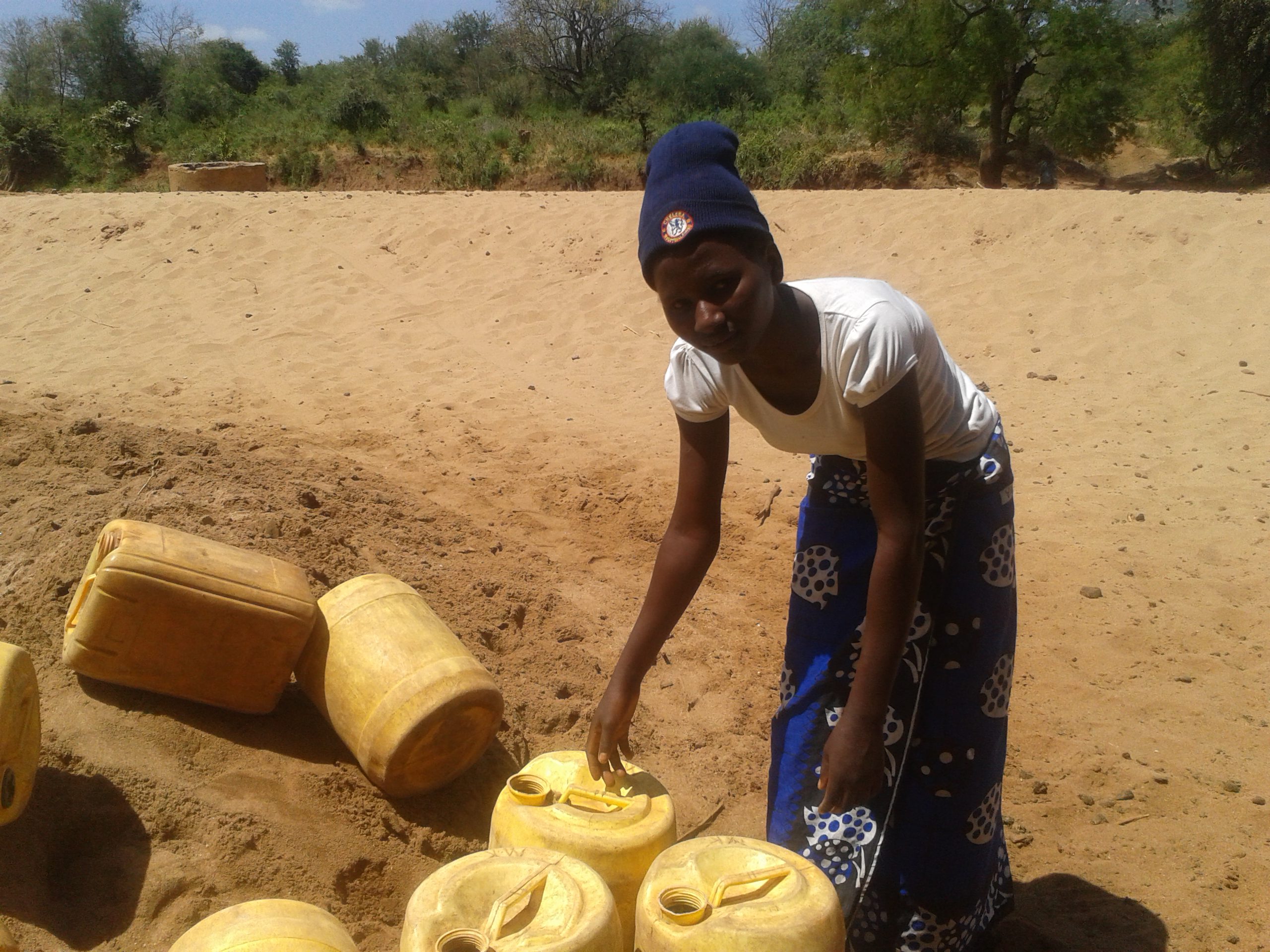
For example, in Kasyonoo Village in Voo District, things look different for those who are using sand dams as a water conservation technology.
Jessica Mulewa testifies on how sand dams have saved them on water woes.” Before these sand dams came we have very lived a very frustrated life. I used to spend so many hours searching for water and this affected my work in the house, even cooking meals for my family on time.”
Similarly, Mary Muteti reveals how this kind of innovation has been of help to their community. “We live in a water stressed country and therefore any drop of water counts. we have formed a self – help group where members are the users of the water. All members are supposed to adhere to the rules of the water usage. We do our regular meetings here at the water point. We just come with our livestock and containers and hold the meeting under a tree after which we disperse with our water.”
National Drought Management Authority, a government parastatal that handles issues of drought in Kitui confirms how the drought situation has been worsening over the past months.
Francis Koma, County Drought Coordinator, Kitui says; “Distribution of rain has not been good in recent past, areas like Mwingi North and West being worst affected. Short rains are the most reliable in this region, October rains, and they failed us. We have formed a technical working group to help in monitoring the drought situation here. Further, as NDMA we release monthly bulletins on drought status in all the ASAL counties. Some of the measures we have taken are to vaccinate livestock against foot and mouth disease.”
On the water issue, Koma says most boreholes are broken at the moment hence need for other sustainable water harvesting technologies like Sand dams.
Apart from NDMA, other organizations are also promoting sustainable livelihood among the Kitui people. One such is SASOL, which has been involved in some of the activities for over a decade now.
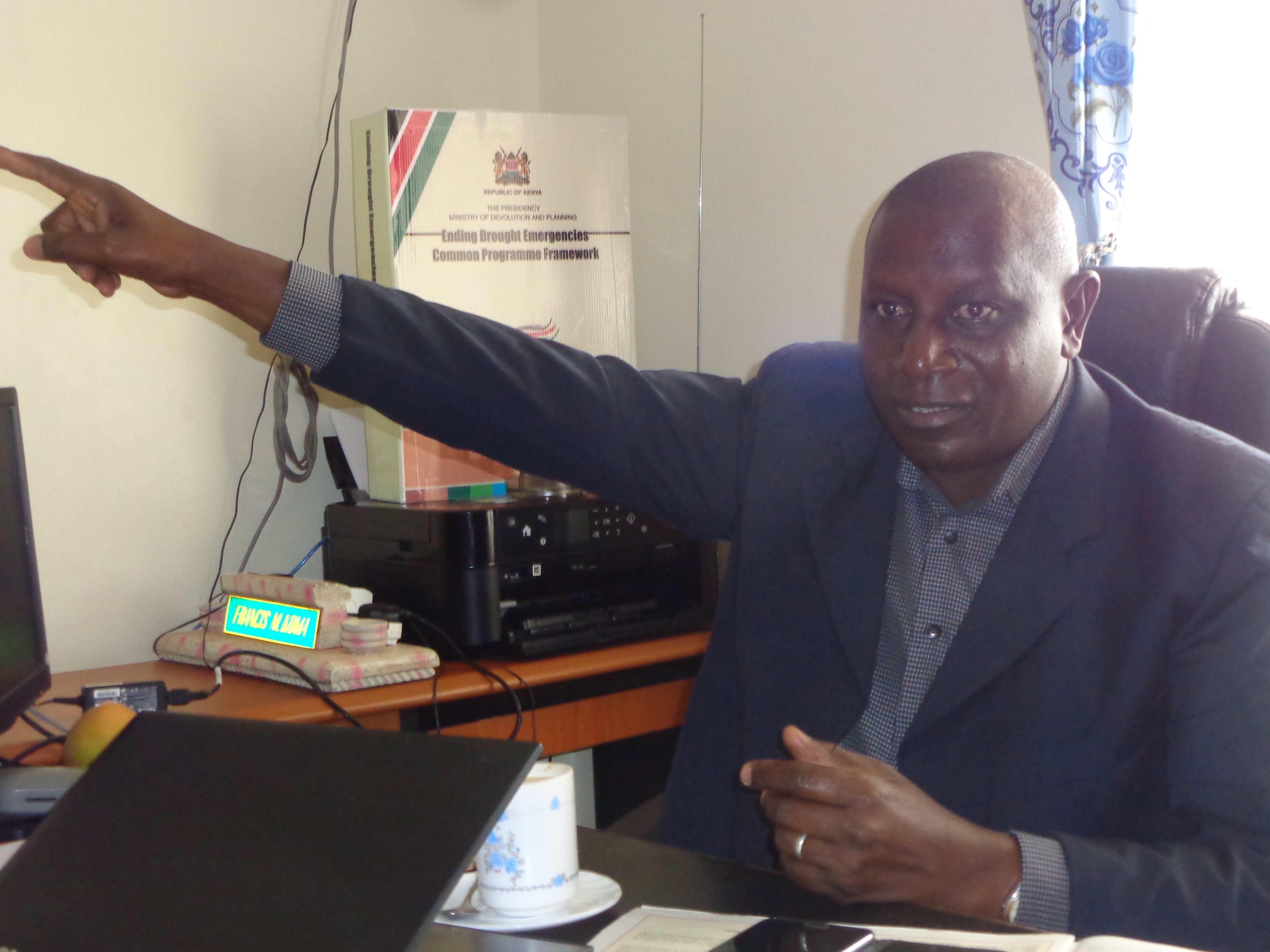
Catherine Ndinya, a community trainer from Sahelian Solutions Foundation (SASOL) says they work closely with communities and help them to construct sand dams. ” First we start by excavation of the sand where community members participate then we build a concrete barrier to hold more water and sand. The beneath area is usually deeper. For this specific sand dam, 24 households are beneficiaries. This well never dries because the water is held by the sand hence less evaporation.”
A sand dam is a reinforced concrete wall built 1–5 meters high across a seasonal sand river.
When it rains the dam captures soil laden water behind it – the sand in the water sinks to the bottom, whilst the silt remains suspended in the water.
Over 800 sand dams have been constructed in Kitui County since 1995, according to Munguti, CEO SASOL confirms how they have been working in Kitui County for the last 25 years.”We have partnered with CEFA, Italian Non – Government organization where so far 20 sand dams have been built in Kitui East, we are still in talks about partnering in other areas.”
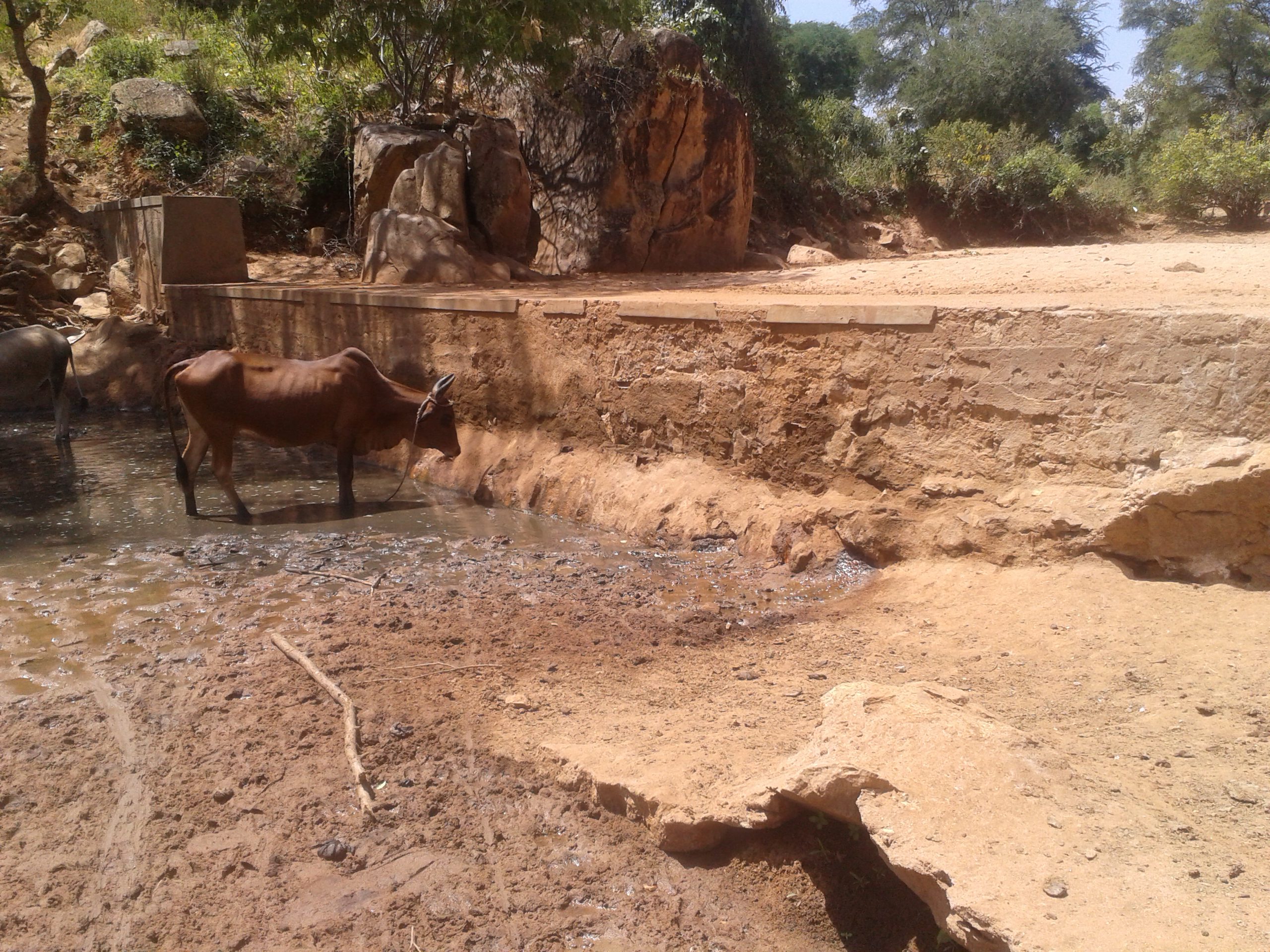
Munguti continues to talk about how Kitui County needs sustainable approaches to water usage.” Dryland farming is practiced here and there is the need for people to understand some of the new water conservation and harvesting methods.Farming has not been lucrative to the younger generation, young people are no longer in the village to farm, this has put a strain on the sector.As an organization, we are working on value chain approaches to help tap in the potential of sustainable agriculture.”
“Another way of promoting sustainable agriculture is through the use of sand dams.Sand dams inject water back to the environment hence a very good approach in mitigating climate change effects.A sand dam costs averagely 850,000 ksh hence need for partnerships in sharing some of these costs.” Munguti reveals.
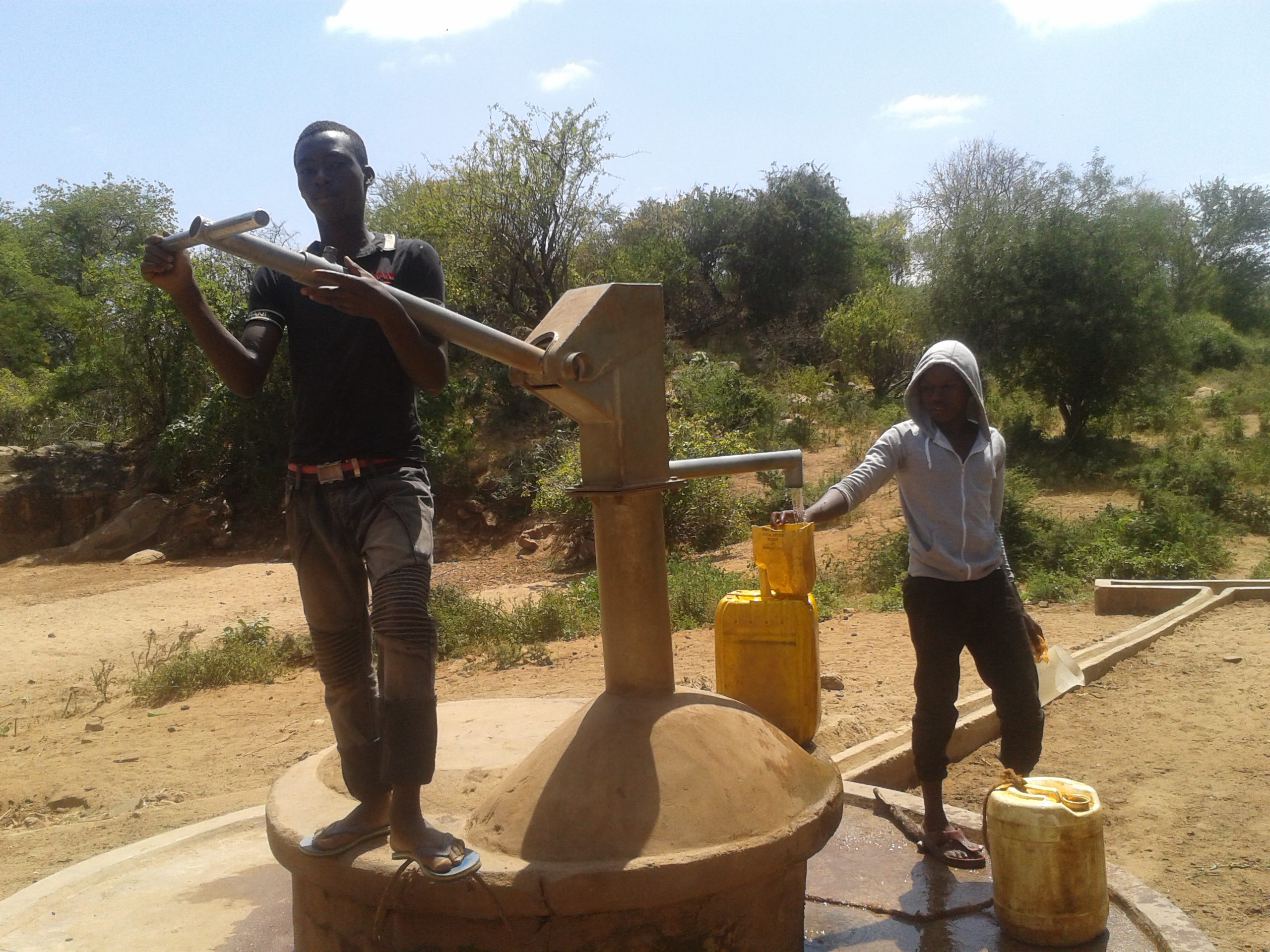
Why sand dams are important
- Combat desertification by recharging groundwater and creating an opportunity for sustainable land management.
- Mitigate climate change by creating water security and the time to practice climate-smart agriculture.
- Reduce conflict by increasing access to water for people and livestock in water-scarce dryland environments.
- Support disaster resilience by creating a buffer against drought and enabling vulnerable people to improve food production.
- Enable the installation of shallow wells producing safe drinking water.
- Require minimal repairs
- A sand dam can be filled with one rain season

